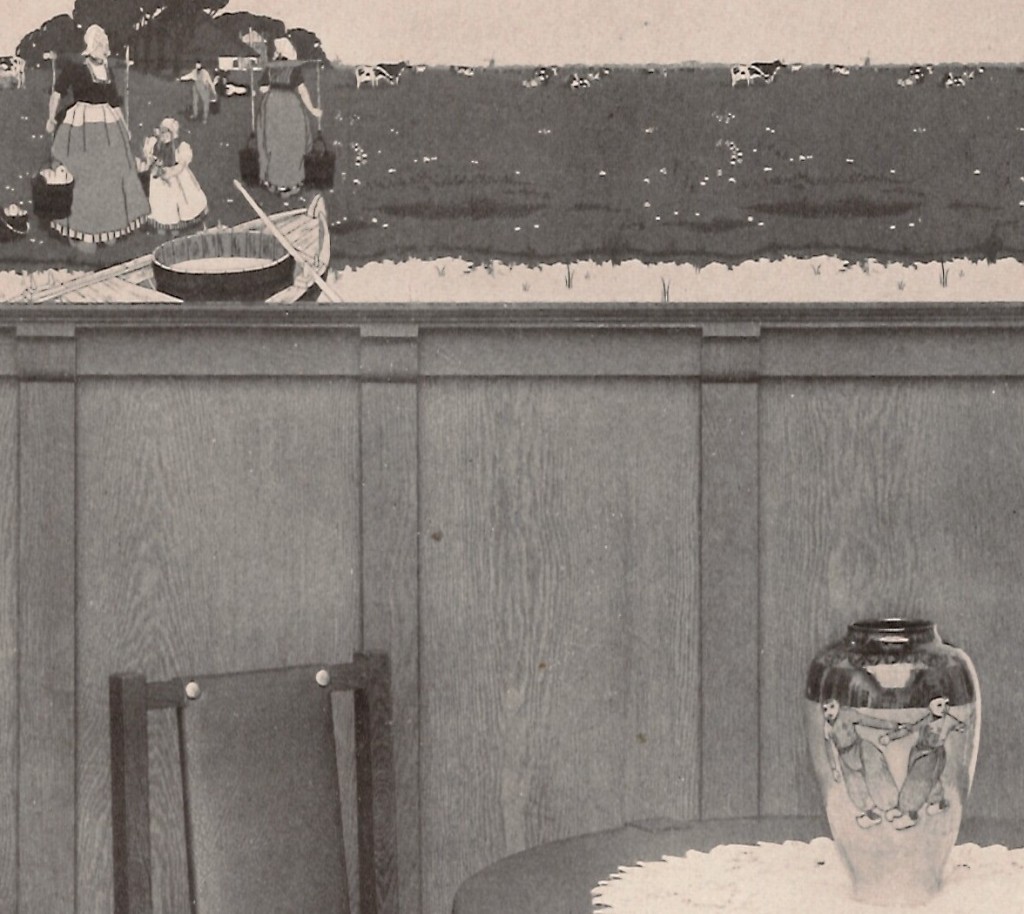-
The Birge Veneers
Among the many specialty types of hand-made wallpapers offered by M.H. Birge & Sons around the turn of the 19th century were a series of imitation wood-grained designs Birge called “paper veneers.”
What (according to Birge) set these papers apart was the fact that they weren’t just repetitious, machine-made, artist’s approximations of wood – they were carefully produced by hand in a process that involved printing directly from the surface of actual wood.
Birge was probably not the inventor of the process, which seems to have been used in England at the same time and likely had an established history, but the company was certainly a leader in the American market.
Birge had wood effects in their line for some time, but it is unclear when they moved from machine-made patterns to the direct-from-wood technique. For instance, in October of 1902, The Wall Paper News & Interior Decorator reviewed the 114 books in the new Birge line, mentioning wood effects, but not as a hand-made process:
Those Wonderful Papers from Buffalo
“It would be hard to find a wall-paper man in any department of the trade who would not admit that M. H. Birge & Sons Co., of Buffalo, are manufacturing about the highest cIass of wall decorations which it is possible to make. Most manufacturing houses do not even attempt to compete with them, which is of course natural, since not everyone can afford to buy such expensive works of art…
In Book 67 there is a paper which is a wonderfully close imitation of stained wood. It is best in the greens and browns, and it is not in the least exaggerating to say that it is absolutely necessary to feel of this paper to distinguish it from finely-stained wood. In this pattern also, there are brass and other metal plates which appear to be screwed on to the wood, after the fashion of old doors and wainscotings… In Book 60 [note: the hand-made papers do not appear until Book 85] there are more stained-wood effects, which are equally perfect.”
The earliest clear reference to Birge’s direct-printed veneer papers located so far is in an article from The Pittsburgh Gazette of July 12, 1903. In a much broader full-page review of general wallpaper trends (entitled Richness and Elaboration in Wall Paper Designs and Materials and illustrated extensively with images provided by Birge), author Elliot Randall states:
“The craze for novelty has gone to such lengths that the manufacturers of wall hangings are constantly evolving effects more and more startling. New designs imitate the old rag carpets of our grandmothers, and panels imitate woods so completely that persons of moderate means who cannot afford real woods for decorating, use them largely. To make the imitation perfect the color is laid on natural wood and the paper on the color so that all the delicate graining and wood markings may come out on the paper exactly as in the original.”
One of the accompanying illustrations, presumably drawn from the Birge line for 1903, appears to show a wood wainscot treatment below a figural upper wall design “For The Nursery”:



